Alum Leah Wulfman on “Gayming” Architecture Beyond the Conceptual
Leah Wulfman is an architect, educator, media artist, and occasional writer based in Los Angeles. They are adjunct faculty at ArtCenter's Media Design Practices (MDP) Program, part-time faculty at SCI-Arc, and recently taught the Summer Design Studio and Technology Seminar at UCLA Architecture and Urban Design (AUD) IDEAS. Trained as an architect, Wulfman has been assembling hybrid virtual and physical spaces in order to prototype new relationships to technology and nature, as well as challenge normative ideologies so often reinforced by technology and architecture. In addition to mixed-reality installations that play with and emphasize the physical, material basis of everything digital, they are presently working on a writing series Living off the Land—exploring a variety of themes like ‘Deep Unlearning,’ and our potential interactions with a Jacaranda Tree in full bloom witnessed through Google Earth.
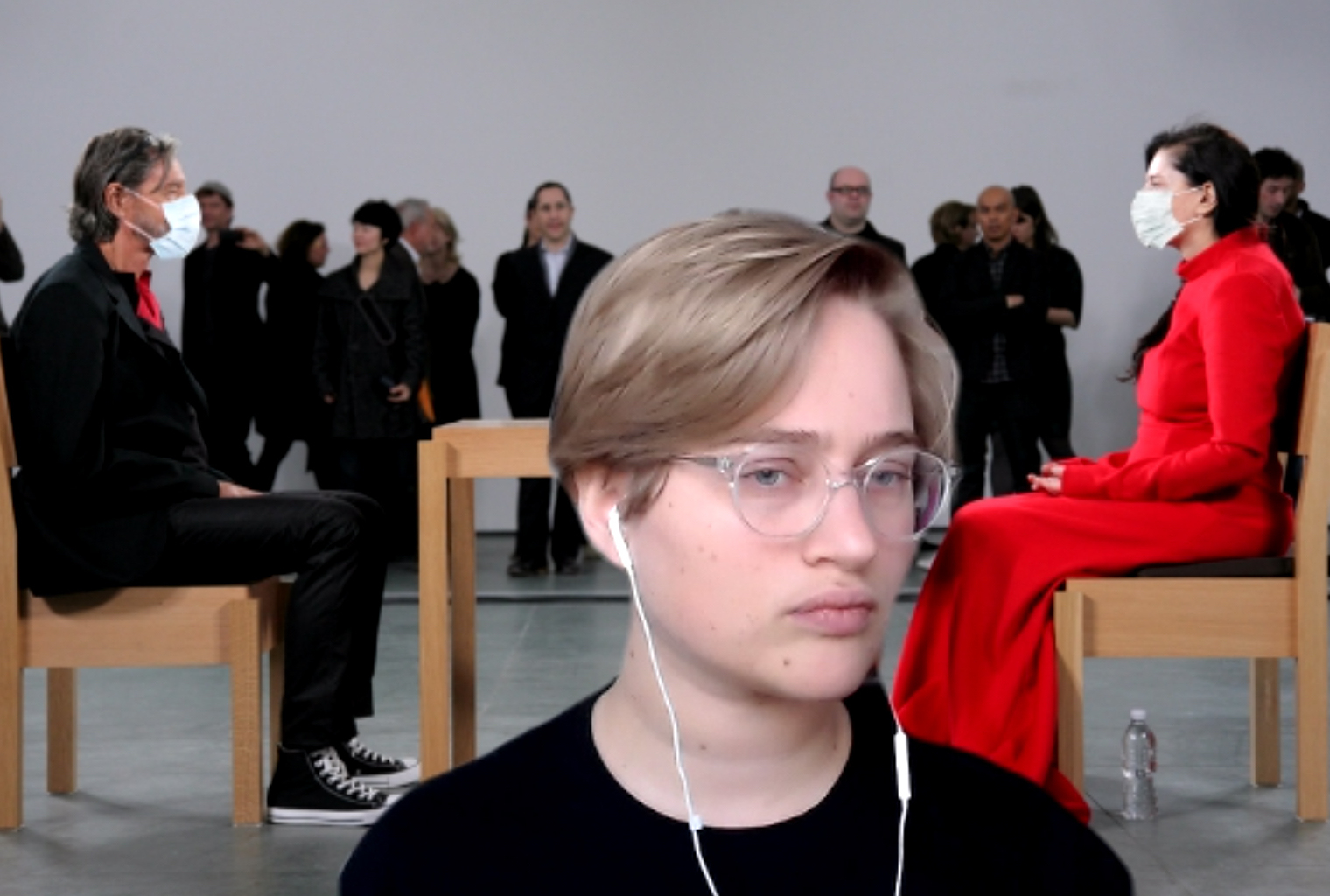
Wulfman holds a Bachelors of Architecture degree from Carnegie Mellon University, where they were awarded numerous interdisciplinary awards for art and architecture, as well as a Masters of Arts in Liam Young's Fiction and Entertainment program at SCI-Arc ('18). Wulfman's work experience includes the offices of Point Line Projects and Front Studio Architects in Pittsburgh, Pennsylvania and Ensamble Studio in (Las Rozas) Madrid, Spain. They have also worked at the Miller ICA, organizing and assembling exhibitions such as Imperfect Health: The Medicalization of Architecture (with the CCA), the Pittsburgh Biennial and Alien She. Their independent projects have been supported by numerous residencies and have been shown as part of various exhibitions and festivals, including Space Saloon Design and Build Festival, Open Engagement, VIA Festival for Electronic Art and Music, and The Wrong Biennale for New Digital Art.
SCI-Arc: Let’s start from the beginning—can you tell me about your background?
Wulfman: Well, I come from a very creative family. My experience growing up was going home after school, and we’d all just sit at the dinner table and draw together. That was something my mom always instigated. Coming from that background, art has always been a part of my life. It was something that I excelled at in school, but I didn't think about it as any particular route. I actually excelled at math, which was a clear deviation and point of distinction, and so that was what my route was for a while. When I went to school at Carnegie Mellon University (CMU) originally, I was one of three women in an honors math program, and that's what got me a scholarship to go to school.
And so then you ended up in Pittsburgh.
I wound up in Pittsburgh because I was looking for something completely different. I grew up in Vermont, which was really amazing in many ways, but also rural and homogenous. I couldn't relate after a while, so I was just searching for kind of the complete opposite. So I was looking at postindustrial places, where I saw myself exercising creativity in a ton of ways.
I ended up at Carnegie Mellon in the Honors Mathematics program, but I eventually got bored by working so often in mental space only. There's nothing tying you down, other than a need to write out proofs and to have a table surface to do this. I was naturally inclined towards woodworking and art, so I needed some physical creative outlet as well, and I just didn't realize until I honed in on that specifically that it had been so missing.
Eventually, I actually ended up working in the woodshop at CMU. Seeing all the students coming in with their architectural models and talking about the concepts embedded within them, meanwhile churning them through the table saw—I was really fascinated.
What was the shift from math to architecture for you?
Once I could place the way that architects, at least architecture students, work in practice, kind of between models as methods of thinking about bigger concepts—just to be able to materialize things in front of you and test ideas out spatially. When I saw that, I was like, "I'm gonna switch to architecture school."
The school that I went to was [a B.Arch.-accredited program at CMU], but we had a top computer science school and a top art school, so I was able to go to all the different lectures. In my second semester, I became close with Mary-Lou Arscott, who’s a big mentor of mine; she's a British architect who is just a phenomenal person and so remarkably talented. Mary Lou was very encouraging to my branching outside the discipline and attending lectures, especially because I was one of the only people doing this at the time.
How did you find yourself back in art and less in architecture?
I ended up going to a discussion in connection with Genesis Breyer P-Orridge’s show at the Warhol Museum, that featured artists Zackary Drucker and Rhys Ernst, which was the first time I was really exposed to discussions surrounding trans identity as articulated spatially and temporally. And in my first year, second semester of architecture school, I somehow found a way of producing a very experimental project that was very loosely tied to ideas of transitioning without having to assume strictly A or B, Male or Female identity—so translating architecture thresholds from personal, emotional thresholds, or even seasonal thresholds. I won the Head of School commendations for the project and was basically told it was a thesis, but it got to this point where it was just an only conceptual conversation for the jury, and so was lacking the nuance and substance of lived realities. That’s when I returned back to art, because I was really done with this idea of architecture existing in theory alone.
In that sense, were you noticing a disconnect between people (architects) and the spaces that they're trying to build?
Exactly, yeah. It was more just saying: there's a complete disconnect, and I’m rarely engaging with actual architectural material at full scale. The speculative project for me then becomes: Speculating what? Speculating for whom? What future? How does this not only exist in a vacuum?
I started pursuing an arts practice, and it was an installation art, mixed-media art practice because I wanted to find different ways of not having to be this person that just performs a concept of architecture in front of a room. I wanted to figure out a way in which architecture wasn't only conceptual—how do I take myself out of the experience and out of the description of the architecture?
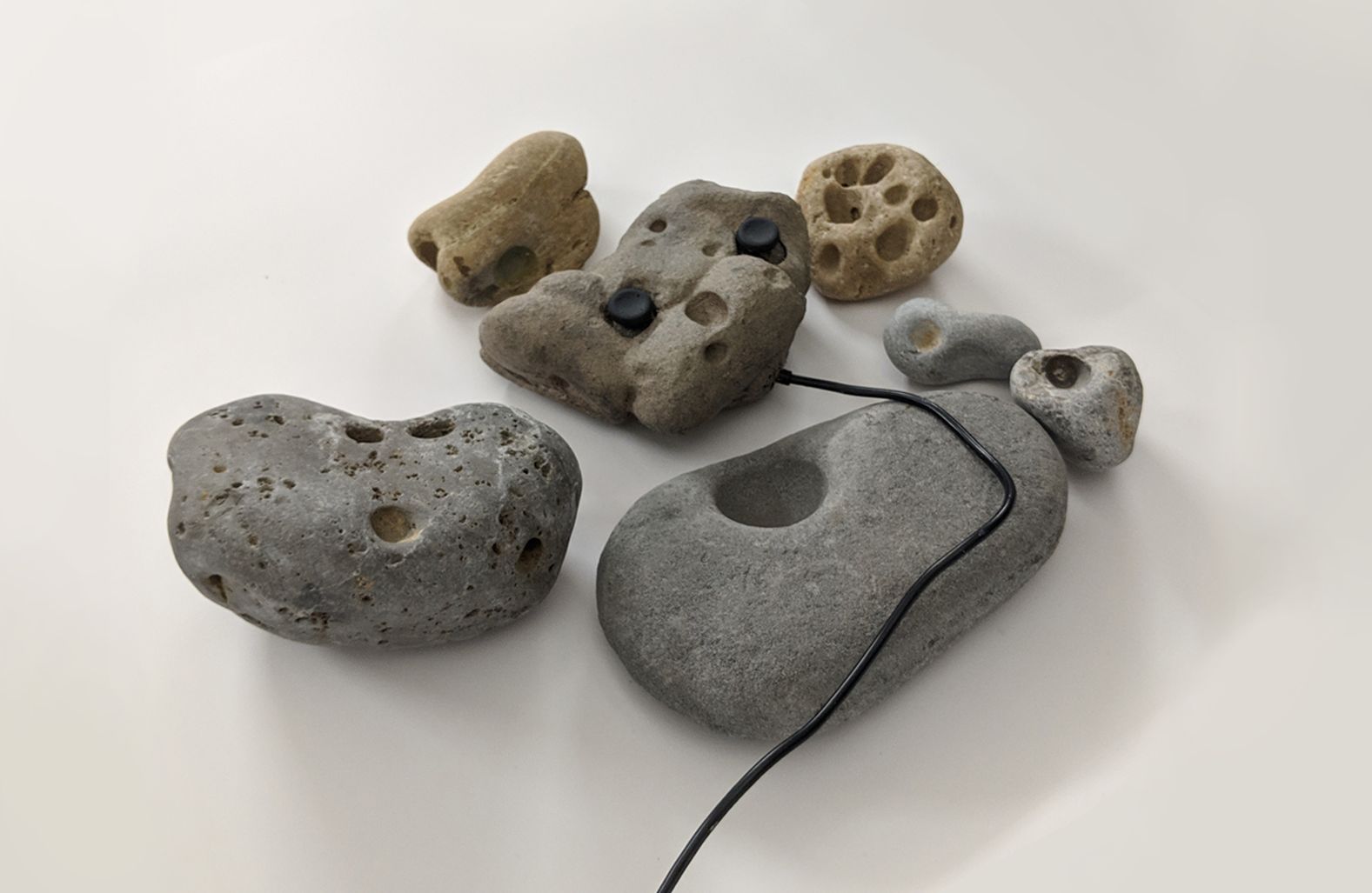
What were some examples of influences that helped you come to terms with, and more fully develop, this idea of making architecture that was not only conceptual?
I became obsessed with the work of Janet Cardiff, in terms of understanding how architectural models then become activated and occupiable. I got a residency at that time, and started making architectures at full-scale that people went inside and experienced their way through.
This was around when I got really into coding, mostly in Open Frameworks, which I used to get to something spatial. I did this piece, somewhat inspired by Janet's sound walks, which was sculptural but produced entirely through sound. I made a one-to-one floor plan of a house, and then people walked in with custom headphones tracked using IR markers, and they were directly fed sounds that were located in and animated through those rooms. In the floor plan, the walls were completely silent. It was almost like a film, where you dolly or pan through the space sectionally. So as you walked from one room to the other, you felt the structural nature of it. I just didn't realize until I did the piece how structural sound is; that you can have a similar sense of a wall through sound that you have through studs.
How were you able to move into other forms of practice that weren’t specifically architecture, but encompassed the removal of these kinds of barriers, both conceptually and materially?
That's where it gets real because the issue with architecture school for me was that to some extent, I found really quickly that when you go to architecture school, you're surrounded by people that have immense wealth. I don't come from that sort of background, so that was entirely alienating.
I had an internship with Ensamble in Spain for one summer, after receiving a large grant from the school to go and work for them. After that, I knew it was entirely unhealthy to project myself towards opportunities that were out of touch for someone of my circumstances, and so I was starved for alternatives. I wanted to know who was finding the hacks and figuring out how you can, in theory, build and have an architecture practice, but not come from wealth that basically allowed you to some extent to purchase your relevance or be that person—because if I was to do that, especially being poor and gay, I felt I would be destroyed. I wouldn't be able to craft a career; I wouldn't be able to craft a life because everyone's hedging their bets that by working for starchitects and these small boutique firms, they'll get somewhere. And I think that's disastrous for anyone who doesn't come from wealth—so I was looking at people with alternative practices.
Who were some of those?
I remember reading in PIN-UP about Anne Holtrop, a contemporary of an architect working in Belgium, Kersten Geers, who's a big architect and has gotten big projects. These are people that went to architecture school but then went and did art residencies, so they were able to gain a certain degree of visibility through developing spatial installations and architectures on a smaller scale. And now he's building, but he didn't go the typical route.
Liam [Young] was another one of those people for me. But of course he worked at architecture firms before working at the AA [Architectural Association School of Architecture in London].
So you talked a little bit about discovering Liam. Was finding out about his work what brought you into the SCI-Arc community?
There was a moment actually when I was in architecture school that when they noticed I was developing an artistic practice, the School’s Head said, "Well, why don't you go somewhere else, like SCI-Arc?" Because while my education did allow me to incorporate artistic studios, it was much more hell-bent on the “practical-ness” of architecture. So, there were discussions around sustainability, and you also had to have your structure and wall details figured out at every stage—it was something that once you came out of it, you were trained to build.
So it was suggested to me that I go to SCI-Arc, but it was also the heyday of parametricism. And at that time, I felt like, “Hell to the fuck no—if you actually think that's experimental, artistic stuff, you're wrong.” That's not where I wanted my practice to go. I might have been using computational tools, and I might have seen parametric tooling as important, but I was and am really against high theory and ways that it then attempts to architecturally impose structure on society.
What changed your mind then, and at what point?
I was always reading and looking for people with different sorts of practices. It seemed like everyone was somewhat aware of Liam through blogging. So I was first aware of his installation practice. I just thought he was marvelous in terms of bringing storytelling into this long legacy of speculative fiction and speculative architecture in a way that felt refreshingly contemporary.
I related to the work and his methods a lot. So I came [to SCI-Arc’s Master of Science program in Fiction and Entertainment] for Liam, because I was looking at a person who was doing architectural work in a way that was ridiculously contemporary, while understanding how spatial conversations and the nature of space mutates over decades and centuries.
What was your experience like entering that program with the background and history you had?
I was an installation artist coming from an architecture background—and having worked at architecture firms on building projects—and the program at the time was actually a film program, even though it was pitched in a very broad way. To start, I didn't know what the program was exactly. I just knew I gravitated to Liam’s work and felt like I needed a change from the architecture work that I was doing. I needed a change and to switch up the circumstances of my life; breathe fresh energy into it.
Also, it was a fun program, and I wanted to do game engine work. So that was great to do here, but there was not much infrastructure for it yet. I think before my year of the program, all films were done in [rendering program] 3DS Max, which I totally buy, but I didn't understand that I was coming to a film program initially. I was like, “Oh, how trope-y—I came to LA to be at a film program in ‘Hollywood.’” Like, fuck my life [laughing].
Yes, you did. You did do that [laughing]. How did that end up building into the projects you eventually made while in the program?
So I was here, doing early VR-adjacent work and spatial work without understanding the larger technological advances towards game design. The summer before I came to the program, MoMA PS1 had a show where they paired Jillian Mayer's work right next to Ian Cheng 's work. I had seen Jillian's "Slumpies" two years before actually seeing her pieces at PS1. I had the realization through that show—which is definitely why I came out here to LA—which was that because a lot of her stuff works at the scale of furniture, I started thinking about all the ways that we deal with bodily circumstances—like embodiment as it relates to our tech.
And I realized that architects don't do that. What is that? What is so modern about slapping a TV on the wall and then having everything be related so flatly, deterministically? Like, walls are flat, TVs are flat, our screens are flat, but [Mayer’s] engaging with it in a really handcrafted way; she's talking about the nature of our bodies not being flat, actually being slumped and fatigued. This is part of the discussion that Liam has in terms of the way we engage with our digital existence—it's always seamless, it's always flat. When the truth of the matter is people are digging for rare earth minerals in the Congo…
I felt like Jillian's challenged these assumptions in a really playful way. And then her work was also directly next to Ian Cheng's, but his stuff is all game engines. [Cheng’s] using game engines to talk about the ways that human storytelling, worldbuilding, actually relate to each other, but also integrates entropic systems. He coined the term "live simulation," and people then generally weren’t thinking of game engines as being these places in which that can happen. For example, character arcs are typically more linear and A does B, but games engines have so many abilities for non-linear storytelling. I had a real sense after seeing Ian’s work in person that open-source game engines were going to be a big player in the future of architecture, and I wanted to learn and promote this future in a participatory, non-proprietary way. So, for me, practices akin to say Sam Rolfes—he never builds out his games, runs everything live out of the editor—are the types of ethical practices that I hope architects employ more and more as they start using game engine platforms. Now, I’m really interested in Twitch integrations for Unity, where livestream viewers can actively change variables in the game using emojis and text commands.
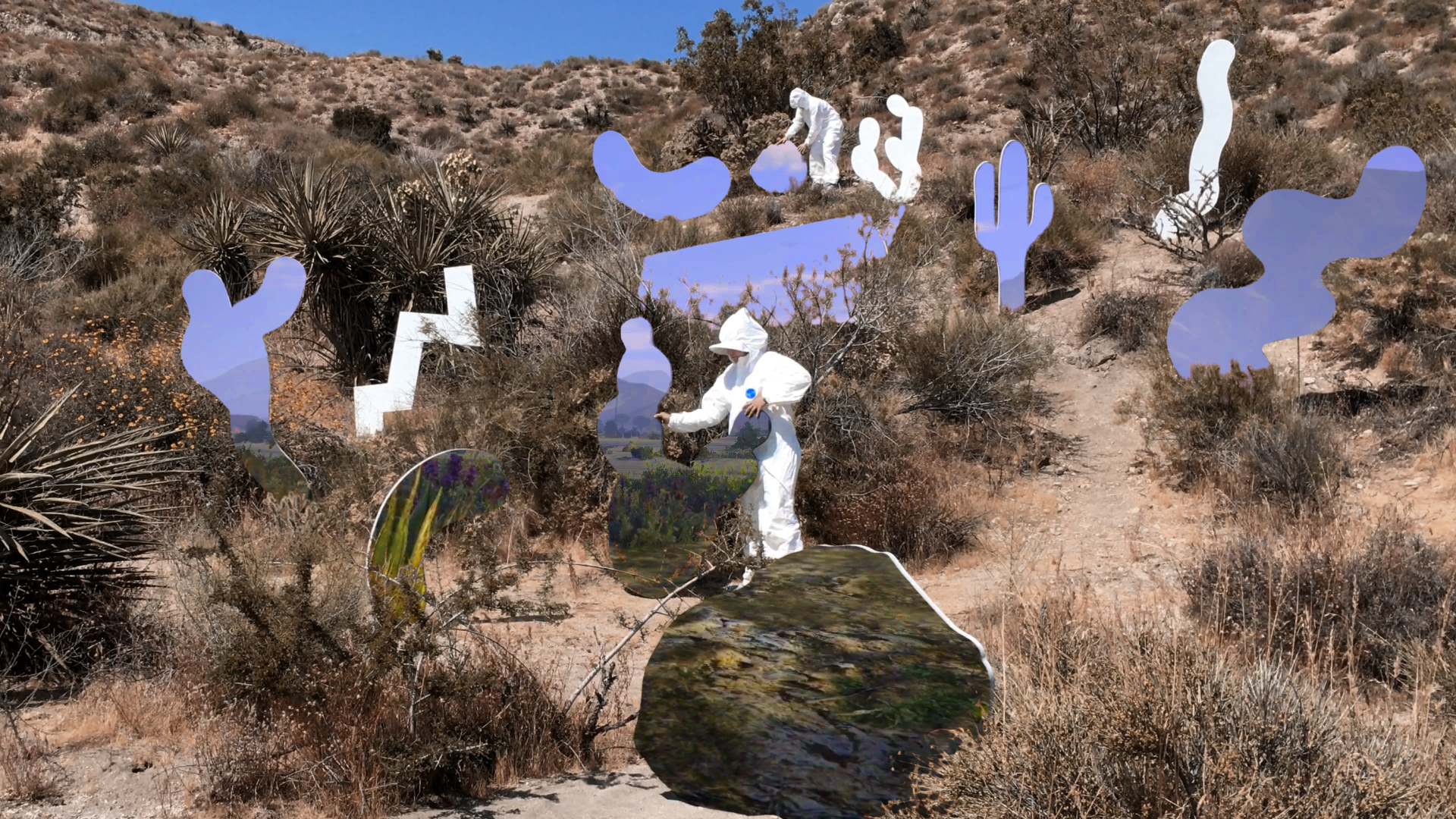
What are some projects that you’ve worked on here of which you’re proud?
So when I came here, I knew I wanted to do a game engine and VR piece, because those are also specifically things I wanted to learn. In terms of learned spatial design, VR is a tool that someone can walk in and literally put on and be in a one-to-one space. If we keep talking about this as the future of the space in architecture, then it's like, okay, let's actually do it and then we can critique it, right?
I wanted to do a VR piece that had to do with the nature of embodiment and space as I saw it today, which eventually led to my CLOUD+ LABS project. I created this origin story, wherein I designed a series of rituals that have to do with ways of engaging with your digital existence using water as a medium. The final piece I presented specifically was a fully immersive VR experience, in which you swim through a psychic reading which plugs in content from your Google searches and re-contextualizes your digital history.
Everyone comes in and has a personal experience with their digital history, and they also swim through it virtually—so it becomes a physical, emotional experience of something that you only usually experience seamlessly, digitally. There are patterns of behavior when we search online: the way we search in succession, or search repeatedly, or search when located somewhere significant but not realizing it because we’re distanced from the experience. I was taking from all of that content, thinking about ways of recontextualizing it and giving it back in meaningful, emotional and even physical ways.
So typically, when you go in for a palm reading or a psychic reading, it has to do with your physical material existence and experience in this plane. But you're also searching online all the time—you’re actively asking questions to the universe, and seeking those answers via Google. For this project, I just take those searches seriously, and contextualize your online search histories as a psychic reading of your digital existence, your digital history. That's the basic concept, but it came from honestly a really architectural origin story.
What was your conceptual process behind developing and executing this idea?
The project began by wanting to make an app through which I ask: If you were able to add up the distance as your index finger moves from the top of your screen to the bottom of your screen, what physical distance would you have traveled while scrolling online? What would that distance be if you accumulated it and put it into some cosmic proportion, from, say, here to the moon? The app would work in the background of your smartphone usage and then brings that use back to you in these cosmic proportions.
That was the question that I came in with, and upon moving here, you get immersed in LA culture in the weirdest of ways, all this normie new age-y stuff. For instance, even at Grow [Market, across from SCI-Arc], there’s a whole row of refrigerators filled with different water types, of different enhanced water brands and beverages that are pitching themselves to you, which I think is as post-human as it gets.
Facebook, Google and Microsoft, for example, are drawing big from the energy grid right now in order to store the cloud—the cloud being this thing, as it’s pitched to us, that we upload our entire lives to that is ethereal in nature; that it’s seamless, that it's not there. And it's like, no, that's huge space and huge energy. And so, in an effort towards “energy anonymity”, Google partnered with this one water facility in Virginia, pitching themselves as sustainable because they are utilizing water filtration drawing from a nearby stream to cool their servers. They then pump the water back out, and say it's cleaner so people can drink it. Meanwhile, Microsoft is literally putting data centers and capsule servers into the ocean as a method of cooling them, which, of course, then warms up the ocean even more. This is the reality of architecture today.
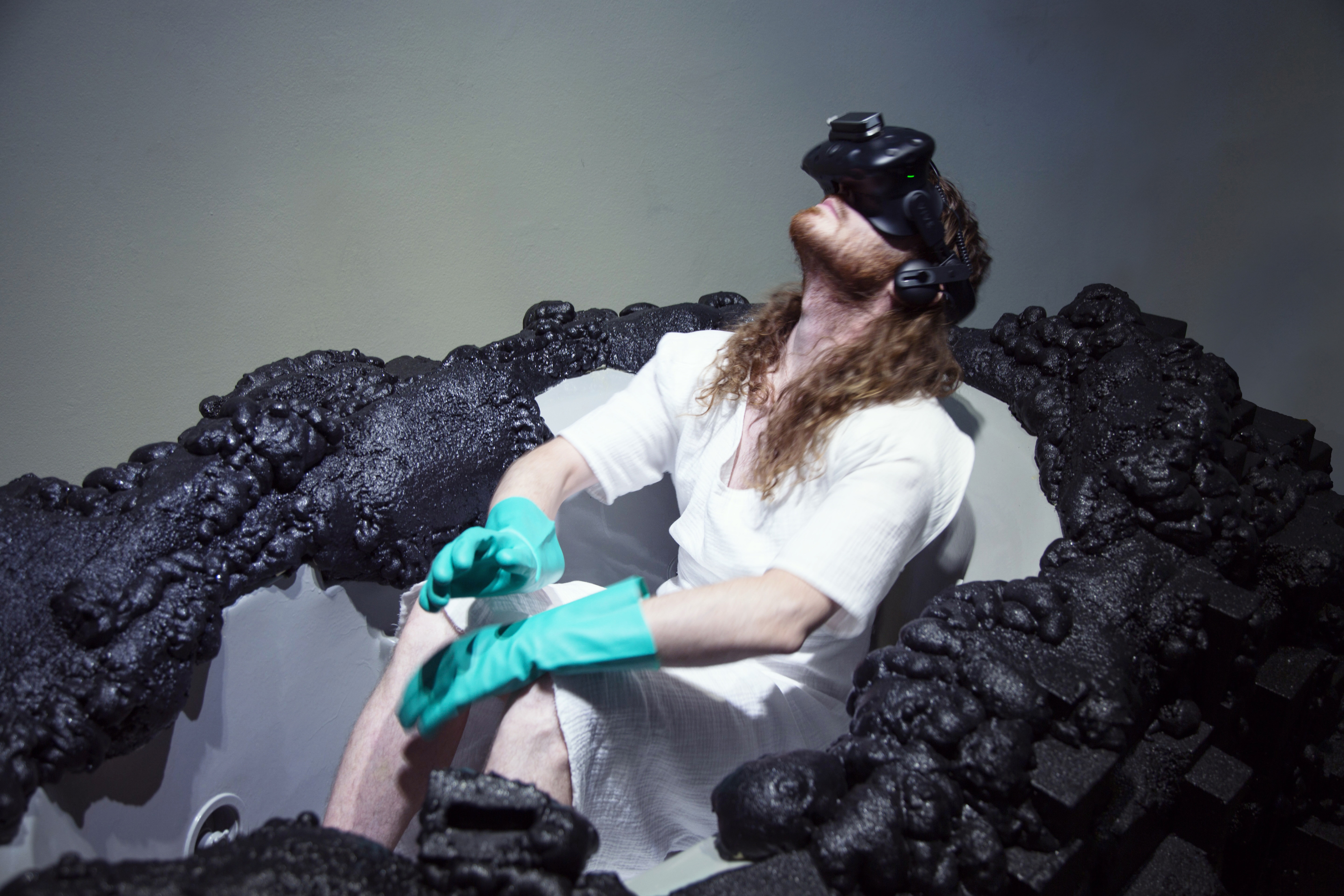
How else did your findings factor into the final output of the project? How did THE CLOUD+LABS materialize from this research?
I created this enhanced water brand that was meant to shed some light on this reality—so like blending techno-, new agey products and rituals with data center concerns, which inherently are of spatial concern. And asked myself: “What if water could be enhanced, rather than contaminated by human activity?” So, I designed what I call data-enhanced water, which uses liquid immersion for data center cooling. Liquid Immersion is a newer trend for cooling data centers, and attempts to save on all the wasted energy used when we air-condition data centers. So, with liquid immersion, servers then get submerged and cooled directly in liquid.
With my project, I collapsed the narrative around the enhanced water industry with this discussion surrounding the data center. I developed a spatial prototype, an architecture in which the enhanced water industry and data centers all collapse together—which is a future that's already happening. I did a ton of research, and pitched a new enhanced water beverage directly enhanced by your digital activity—so it's data-enhanced water. That was CLOUD+, the water, and I made an infomercial for it.
Enhanced water is all built around this mythology of the way that it becomes enhanced—positive ions, negative ions, or pH level changes. To some extent, the idea was as you go online, you're connected to a data center somewhere. As the liquid runs over the server, you possibly add a charge to it, so your water could become personal and therefore build into this narrative of the quantified self—become the new holy water almost.
From there, it was a question of; if this is the new source for our water, if it's the data center, what are the new associated mythologies and rituals? How do we engage this water source? What are the different products involved?
I made a suite of rituals in which my thesis project was just one of those rituals. The VR ritual, called "internet-guided healing session," was a psychic reading in which you were, in theory, going through this CLOUD+ water. You're swimming through a bathtub full of it. If you go to Evian's source, for example, you go and swim in it, and it's supposed to be healing. You can buy Evian cream, while drinking Evian bottled water.
That was part of the narrative of creating different sorts of connections with this new water source. Another ritual was called Light Tissue Massage, which is the opposite of a deep tissue massage. This massage recontextualized the gestures you do on your phone—it's all very sensual, the way you interact with your phone—but placed them on the body, specifically in places strained by cell phone and computer usage, like around your eyes, your temples, your wrists, your neck, your back.
It seems like you were also very concerned with creating a physical interactivity with this virtual environment as well as utilizing the element of the game engine; of step-by-step engagement, of choice.
Right—it wasn't just that you enter a strictly digital world by putting on a VR headset and that's it. I wanted to address how that experience of being in a VR headset can be contextualized in a broader environment and thought of as existing within a set. For me a big realization from this thesis project was the question of how I get the space within the game engine out into our present material space. How do I physicalize things which then track back to the game engine space?
Speaking of the speculative project, we find ourselves in a particularly speculative time. How does this affect the work you’re doing now?
With the idea of the pandemic, I think everyone's just really anxious right now. There's the idea of our government being entirely out of sync with the needs of what is happening on the ground, and so you see different artistic communities banding together and self-supporting. That’s a thing that's been happening in the US for a while—people go on fundraising websites, like GoFundMe and Kickstarter, to pay for their medical bills that are $10,000. But we're also operating with the understanding that everything's global. Medicare for All becomes a real necessity in the age of global pandemics. Viruses exist on a global level, and they're only going to increase with accelerating Climate Change. I'm also not immune from any of those lived realities, I just don't talk about them too much within an academic context in which I typically feel alienated by such things. That stuff weighs on me every day.
I teach and run my own studio at ArtCenter. I designed a Mixed Reality curriculum, and that introductory curriculum is run in a space called The Immersion Lab, which is this amazing space that students have access to 24/7 and where all this VR equipment is already set up for students to jump right in. So, the Lab is meant to create a no-barrier entry space around things that we think of as hardcore tech, like VR, AR, Motion Capture (MoCap), etc.
But right now students are meant to be starting their individual projects in the Lab, and that's hands-on, and it requires equipment and tools and prototyping in the space together. So, in many ways, I can't actually teach my course. That’s very real, you know. Artists across the world aren't getting paid because folks are reliant on their community gathering together in space. This is also the reality that many people have existed with for a very long time, especially here in LA.
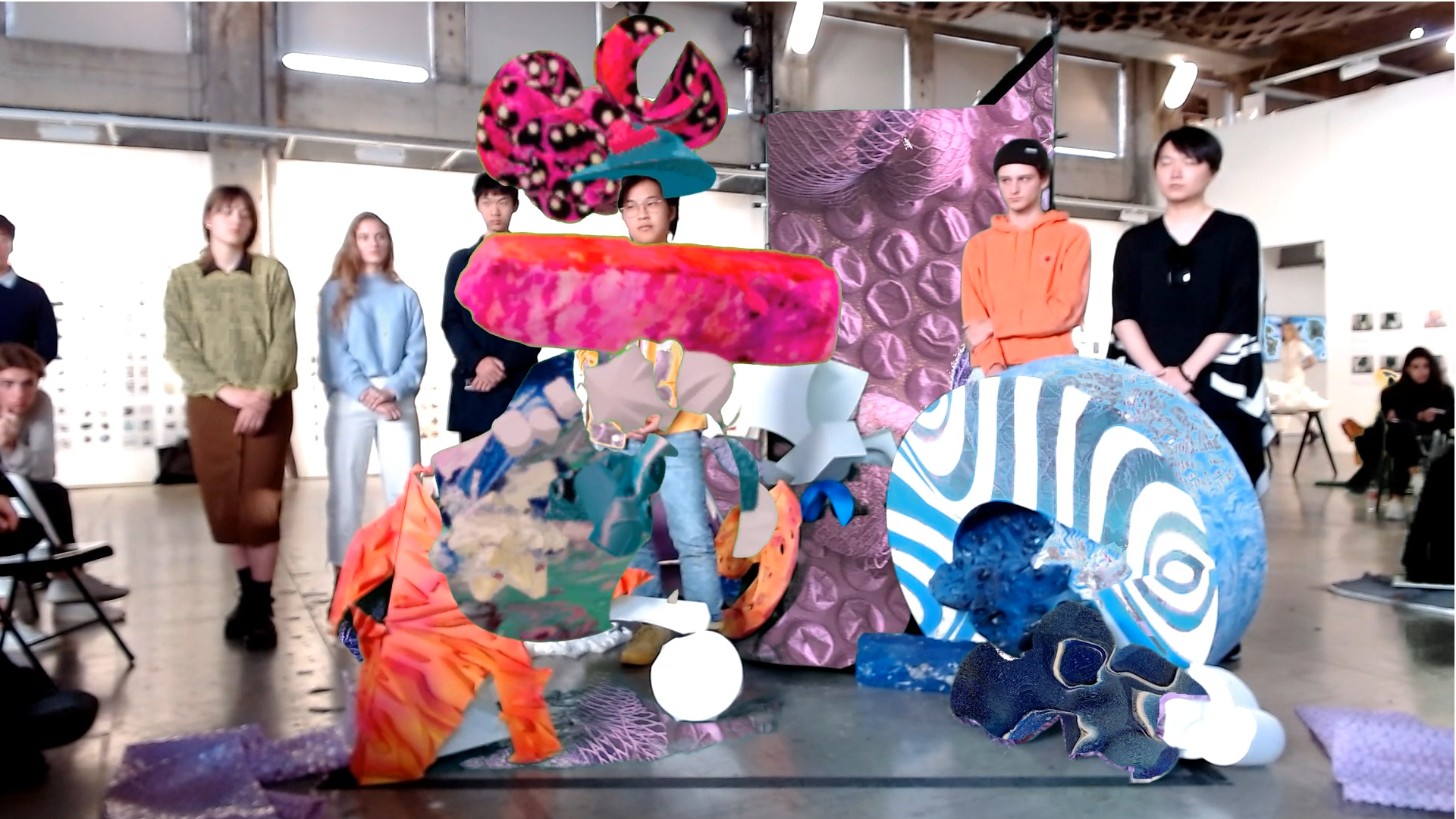
From this point forward, how does that affect the work that you want to do, and what are your thoughts on how we are projecting ourselves into the future?
So I was introduced to some incredible folks up at MDP, Media Design Practices, which is an MFA program at ArtCenter, and that’s now where I work. Jenny Rodenhouse started and runs the Immersion Lab, in which I run my studio, and there are old friends of SCI-Arc, Tim Durfee and Mimi Zeiger, all teach there as well. And so I went up there as a guest critic in the Lab, and I had this realization while sitting there... I was like I just came from spending the morning on reviews at an architecture school, and I have to tell you that this is so much more spatial. I was like, all this work is so much more spatial than the conversations and the work being done at many architecture schools.
So I think a big realization for me is that while architecture school is a really good prepper for doing spatial work and having these sorts of spatially-oriented conversations, I think the most relevant spatial work isn't actually being done in architecture schools. That's my realization from working in the world. I’m much more interested in the folks disrupting and purposefully misusing the tools in order to promote alternatives, rather than this positive attitude that architects have towards technology and technological progress which remains a deeply Modernist way of operating.
How many times will we hear repeated, "VR is the future." and not actually engage ways of disrupting the tool and making it utterly more physical and inherently more spatial? Realism in VR and game engines is entirely overrated. Like many of my colleagues in the program at ArtCenter, I’m interested in the ways in which game engines bring us back to working with space in imaginative ways, rather than making pretty realistic pastoral imagery or rendering dystopia endlessly. Architects seem to like fatalism, which is such a dude-centric way of operating. So I can’t relate, and find it to be an actually uncritical take on progressing spatial computing technologies, which I see as such rich territory for architectural investigation.
Are there other examples of work or behavior that attempt to address this lack of representation of space and voice in the industry?
Patrisse Cullors just put through Measure R [which supports the development of a plan designed to reduce jail population and incarceration in California]. These people have been on the ground, doing the creative work that's necessary in order for them to simply survive. I just want to support anything I can with and for people like that.
Community is everything, and as to what that means for the architecture discipline. My success in architecture, in terms of visibility and what not, is all thanks to women and other non-binary folk. Those are the people that always suggested my name; that actively believed in and promoted my work.
In terms of people seeing my work online, everyone that's reached out to me is also a person that's marginalized. So for me, solidarity and promoting each other is really big, and that has to do with community survival because obviously no one else is doing that work for us. And I think we need to keep being imaginative together and putting ourselves in positions where we can keep supporting each other.
What are your thoughts about how queerness is represented in academia and how does queer identity play out in your work?
First of all, I think it's a positive start that architecture's finally coming around to having the awareness that other people exist in the world. That alone seems big in our discipline because you could say that within the film industry, Wall Street banking, and finally architecture; these things take a shit ton of money, which means that the person who holds influence is inherently a dude with engrained patriarchal mentalities, or a woman who is not that different in practice. That’s just the reality we all live and have to operate in.
But in academia, in theory you're actually trying to catalyze something else through your work, and the fact that you realize other people exist in the world, and that maybe this notion of queer aesthetics isn't only a notion of queer aesthetics, but rather actually about every aesthetic that you've taken from and used without quoting. Queer aesthetics is not something new, but if anything, it’s a method of reclaiming, renaming, and celebrating what was stolen and suppressed in the first place—but this is actually what gay people have been doing since forever. It just seems new and performed as it becomes a topic of interest for academia.
I'm really against commodifying language and gentrifying that sort of space because I think the power of it is that it has escaped that, which is what I see as really wrong with these sorts of symposiums and any discussion around “queer space.” Folks write about such lived realities as a method to claim marginality or otherness, yet completely neglect the nuances of everything. There’s already so much built-in trauma and homophobia that we ourselves have to contend with, we shouldn’t be continuing to appease to other heteronormative ways of regulating ourselves and our work. A lot of architects want to claim stuff, but to claim it is also to trivialize it and turn it into something you can put on a shelf, and it’s never that.
I’m not interested in speaking to a room full of straights explaining my gender expression or sexual orientation, that’s actually not for you. I’m not here to perform for you, I’m here holding it down with and for the people that have been holding me down. We’ve all been having this discussion forever—people are just wanting to listen.
I'm totally against the gentrification of queer anything—I tend to say I do gayming with a Y—so I have this way of relating to my work as gayming space versus queering space, which means, it has to do with role-playing. It has to do with the positioning of the body, and mind-body dynamics, which are so central to any sort of queer and trans identity and expression. Trans expression is inherently spatial and temporal. So yeah, the work is directly tied to like a person occupying space, with their experiences, and there’s the immediate need to play with and exist in space in order to even engage it.
That mentality is pervasive, whether you're online or not—URL versus IRL. Hopefully it's both always. Because it's always both.
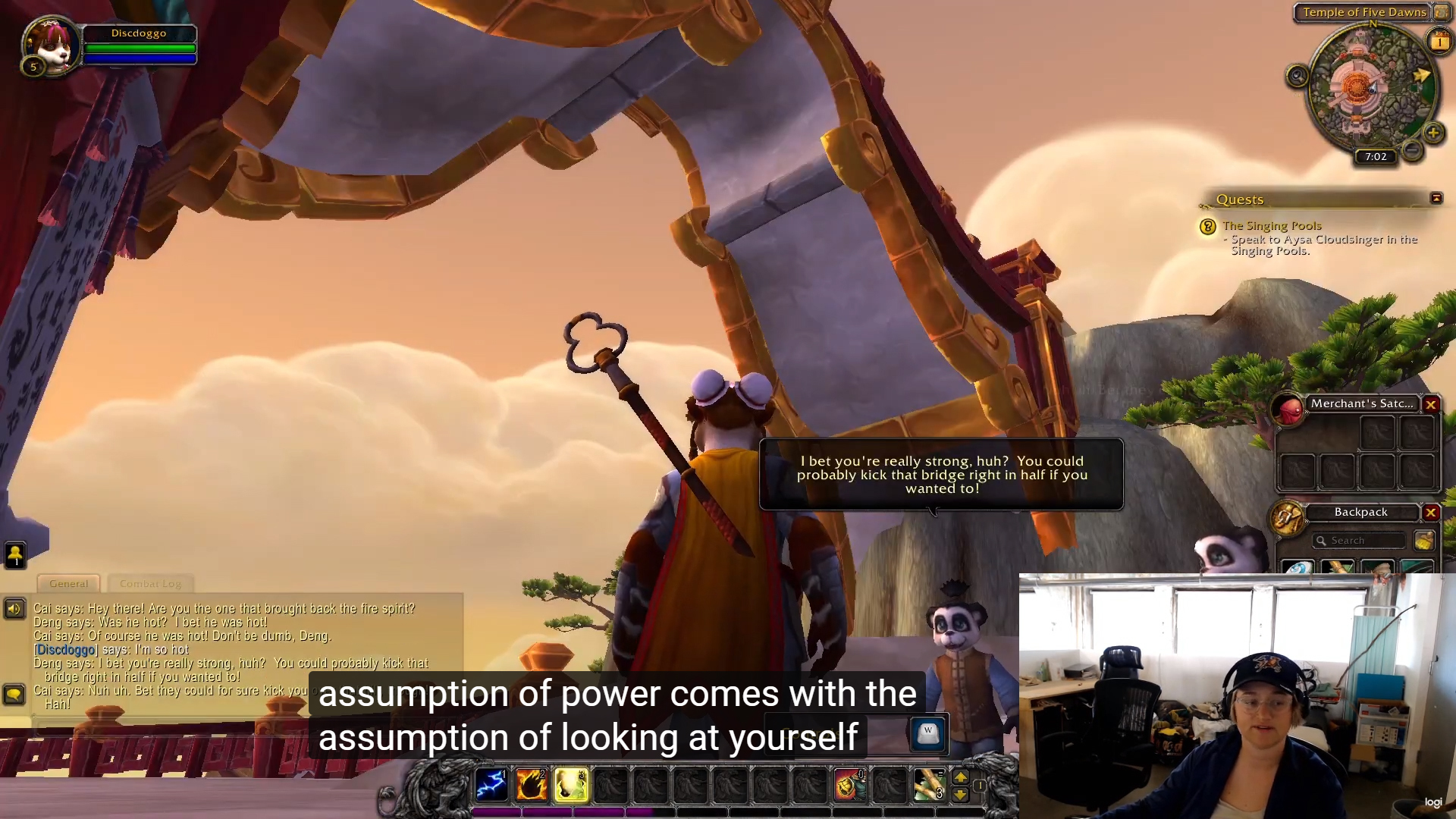
It is always both, and it seems like that dichotomy is a strong one in your work. Finally, in the future, what are you most interested in cultivating with your architecture practice, both culturally and in terms of design?
I'm most interested in working with youth, and want to start an after school or in school program for primary school students. Part of the impetus is seeing youth interact with art in museum and gallery settings where curators and assistants engage young people towards incredibly complex discussions, metaphors and insights prompted by the art on the walls and the content put before them in the space.
We don't do this with the spaces we live in and around, or design even, and I think we need to radically shift and open up the architecture conversation so that we are. So I want to engage youth in practices of drawing and dreaming into architecture in situ, which also means drawing and making architecture in relationship to their sense of neighborhood, community and future. I continually find myself interested in Mike Kelley's Education Complex project and his process of making architecture models from memory (at least to start) of all his places of education and then making a masterplan—a banal form of them all.
And then I want to collaborate on and actually fully build a full-scale architecture project and Mixed Reality house with a 7 year-old that is based on her drawings. I want her to get the Pritzker for the project—while I remain an anonymous collaborator—especially since we can no longer be a part of the Young Architects Program (YAP). Maybe, I just name the youth architecture program that I want to start the Youngest Architects Program then hah :)